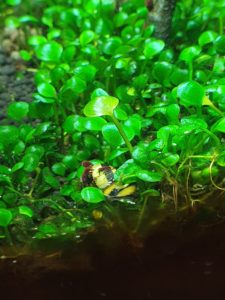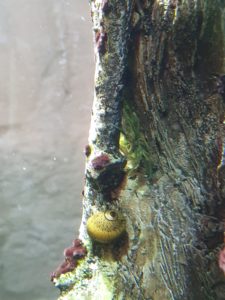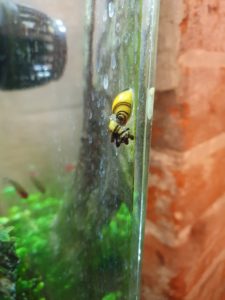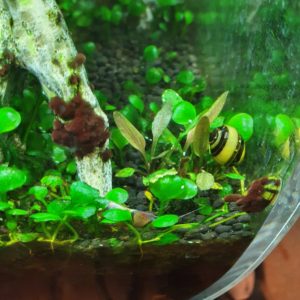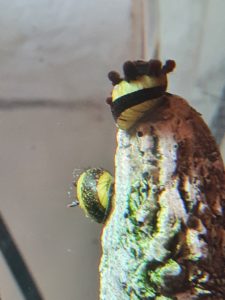Zebra thorn snails – interesting aquarium dwellers
Zebra thorn snails (Clithon corona) are a type of nerite snail. They are notable for the hard protrusions on the back of their shells – the thorns – and also for an interesting brown and yellow stripy colouration pattern. Like all nerite snails, they have a reputation as being good algae eaters, hence a good part of an aquarium “clean-up crew“, and they are not capable of breeding in fresh water so their numbers won’t go exponentially out of control.
Do zebra thorn snails eat algae?
Well… they seem happy enough and they’ve been living in the aquarium for at least 6 months, so they’re eating something! I haven’t noticed any damage to live plants and the snails do get around and into small cracks and surfaces, and there hasn’t really been a green algae problem on the mountain sculpture, so I’m going to not argue with the scoreboard on this one. They do spend time on the aquarium walls, but don’t seem particularly effective at keeping them algae-free. You don’t for example notice the trail of cleared algae left behind on the walls after the snail has gone through.
Algae can and does grow on the shells of the snails. You can see one with signficant outcrops of black brush algae in the pictures above. This doesn’t seem to bother the snails. Some reading suggests to just leave it alone and not try to “help the snail” by attempting to “clean it off”.
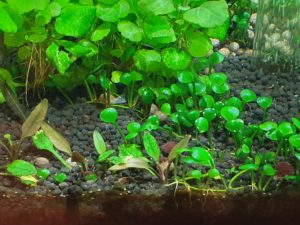
Zebra thorn snail eggs don’t hatch, but they still lay them
Zebra thorn snails can’t reproduce in a freshwater aquarium, because they require brackish water for reproduction (this is also true for amano shrimp) but that doesn’t mean they won’t give it a try. Snail eggs are small, white, and tend to decorate the bottom of the aquarium where the substrate comes up against the walls, or on the leaves of low-to-substrate plants. Up close it’s not particularly attractive, but the eggs are so small they don’t really get noticed from a few feet away. There can be lots of eggs, and they adhere strongly so it’s not very practical to try to remove them.
